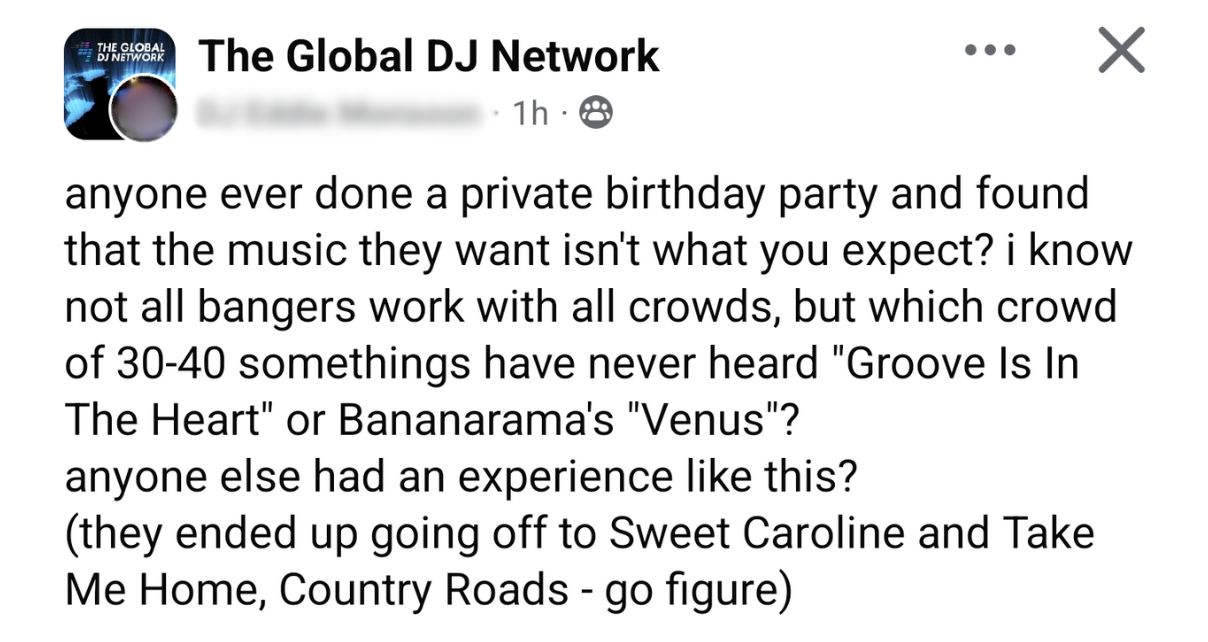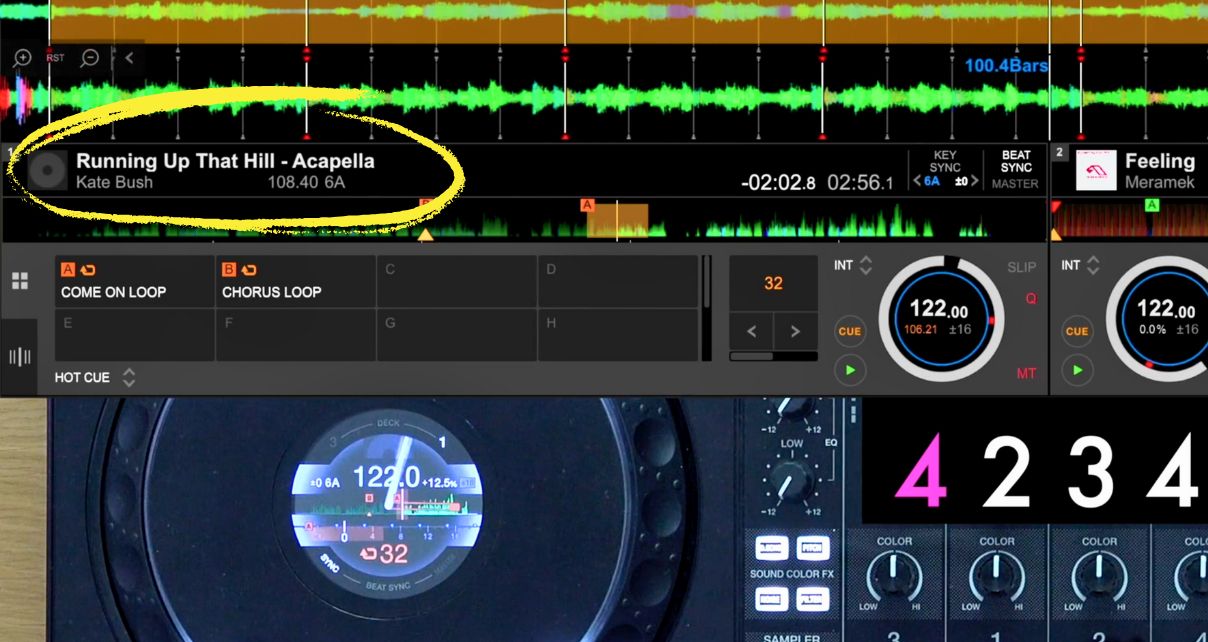Here’s something for modern mobile DJs to consider: Could it be that the ability to distinguish between “hits of the time” and “timeless hits” can make or break a set?
This distinction was the focus of a recent live session we hosted here at the Digital DJ Tips school, where we explored how DJs can better fill dancefloors by understanding these two categories of music.
You can watch the full session in the video above, or read on for a discussion based on the live lesson and the valuable experience shared by our community throughout the lesson.
Why weren’t they dancing?
The session was sparked by a generous comment from a community member, who recounted an experience at a private birthday party.

As you can see, despite playing tracks like Dee-lite’s “Groove is in the Heart” and Bananarama’s “Venus” – songs that were hits during the attendees’ youth – the crowd responded more enthusiastically to classics like Neil Diamond’s “Sweet Caroline” and John Denver’s “Take Me Home, Country Roads”
This scenario highlights a crucial lesson for DJs: the importance of knowing when to play songs that resonate universally, transcending their original era.
Understanding the difference
The distinction between “hits of the time” and “timeless hits” lies in their lasting appeal. Songs like “Groove is in the Heart” were significant during their release but may not have the enduring appeal of singalong, “terrace” anthems like “Sweet Caroline” – a song seemingly belted out every time any sporting event occurs (currently, at least, here in our part of Europe).
Such songs have become part of the cultural fabric, often evoking a shared experience that goes beyond mere nostalgia. As Buda Nova noted, “It needs to be a recognisable song. The crowd must be able to sing along without even thinking about it.”
This insight is particularly valuable for mobile DJs of course, who frequently perform for generationally diverse audiences at weddings and private events, many of whom may not really be music fans at all, and certainly not enthusiastic about dancing.
Adapting to your audience
One of the key takeaways from the session was the importance of reading the audience. Mac, one of our participants, put it most succinctly: “Know your crowd.”
This involves not only understanding the demographic but also being prepared to adapt your set on the fly. Sean added, “This is why you ask [the organiser] before you start your gig,” – and we’d also add that you should try to to chat with the audience as well before the evening properly gets going, if you get the chance to.

Positive T highlighted that it’s not just about the age group but “where you’re at” in terms of the event’s atmosphere and energy. This means being attuned to the vibe of the room and adjusting accordingly.
As DJ Akurit pointed out: “When the crowd has diverse musical tastes, it makes it very challenging as well.” This diversity requires DJs to be versatile and ready to pivot as needed.
Strategies for success
We shared some strategies to help DJs navigate these challenges, taken straight from our DJ training courses.
The “dartboard method,” for instance, involves playing a variety of genres early in the set to see what resonates with the crowd. This approach allows DJs to refine their playlist based on real-time feedback.
Read this next: How Pro DJs “Pre-Read” Their Crowds
Additionally, the “15-minute rule” suggests rotating through different genres every 15 minutes, which can help maintain energy and interest across a diverse audience. As Tha Rukkus! mentioned, “You may experience a transition from the ‘happy hour’ crowd to the ‘early’ crowd to the ‘late’ crowd,” highlighting the need for adaptability.
Incorporating timeless classics
Danielle highlighted the effectiveness of including tracks that have recently been featured in soundtracks or TV ads. These songs often gain renewed popularity, making them excellent choices for a DJ set.
Similarly, DJ Ed Lover noted the power of original versions over remixes, particularly for audiences seeking a nostalgic experience: “I had classic remixes, but I realised they wanted the originals and they wanted to sing and not dance,” he shared, underscoring the importance of understanding audience expectations.

Eugene suggested considering what songs people might have “sung into their hairbrushes during their youth”, which is a good way of looking at it!
Meanwhile, Charlie observed, “You can feel from the dancefloor when it is time for a change. Dropping a timeless classic at those points will blow the roof off.”
This sentiment was echoed by Guilherme, who noted that “early teens want to hear the best songs in the beginning of the party, but if you play them then, nothing works later on,” emphasising the need for being strategic in your programming.
Finally…
It was an absorbing debate! Ultimately, the art of effective mobile DJing may lie largely in the ability to balance “hits of the time” with “timeless hits”, creating a set that fully resonates with the audience.
As Loz aptly put it, “If you can’t read the crowd, you’ll fail.” This is the ongoing challenge and joy of DJing – continuously learning and adapting to create unforgettable experiences on the dancefloor.
- If you’re looking to deepen your understanding of mobile DJing and how to mix the required wide variety of music like a pro, Digital DJ Tips has a comprehensive and practical course suitable for all levels of DJ, called “Mixing for Mobile and Wedding DJs” – check it out here





